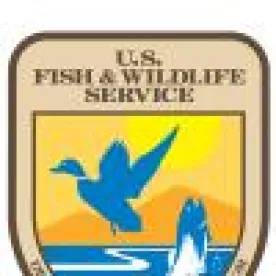On April 2, 2015, the U.S. Fish and Wildlife Service (FWS) announced that it would be listing the northern long-eared bat as threatened, rather than endangered, as it had originally proposed in October of 2013. The listing gives the bat new protections but does not impose all of the requirements that would have been applicable had the bat been listed as endangered. A “threatened” species is likely to become endangered in the foreseeable future, whereas an “endangered” species is currently in danger of extinction. On the very same day, the Center for Biological Diversity filed a complaint for declaratory and injunctive relief before the US District Court for the District of Columbia, Civ. No. 1:15-cv-00477 requesting tha the court, (1) declare that the Service’s failure to engage in a public process and prepare either an environmental assessment or environmental impact statement analyzing the potential environmental impacts of, and alternatives to, the interim 4(d) rule, prior to adopting it, violated NEPA and is unlawful; (2) vacate the interim 4(d) rule and remand it to the Service; (3) award Plaintiff fees and costs; and (4) grant such other relief as the Court deems just and proper.
The bats’ population has been dwindling due to white-nose syndrome, a fungal disease that has killed millions of bats, and which quickly spreads when the bats congregate in caves or abandoned mines. The syndrome affects their hibernation and causes the bats to starve or dehydrate.
Although the bats are currently found in a large portion of the United States, spanning 37 states from Maine to North Carolina on the east and reaching as far west as Oklahoma, Montana and Wyoming, not all areas of the bat’s range have shown signs of white-nose syndrome and, particularly in the westernmost areas of its habitat, the population appears stable. Consequently, as part of the announcement, the FWS issued an interim special rule that exempts incidental takings of the bat in those areas of its range not affected by the white-nose syndrome.
Because the main threat to the bats is from a disease, rather than from human activity, there are limited options to try to protect them. The primary tool is restrictions on tree removal to protect their habitat during certain months, thus improving breeding opportunities and giving newborn bats an opportunity to grow.
In the areas in which the white-nose syndrome is prevalent, the interim rule exempts takings of the bat from maintenance and limited expansion of rights-of-way for roads and utilities, forest or prairie habitat management, as well as limited tree removal projects, provided that these activities protect known maternity roosts and hibernation caves. Specifically, activities must occur more than a quarter mile from known, occupied hibernacula; cutting or destroying of known, occupied roost trees shall be avoided during the pup season (June 1 – July 31); and clearcutting of known, occupied roost trees shall similarly be avoided during the pup season. Purposeful taking of the bat is prohibited everywhere, except where necessary to remove the bats from human structures or where permitted for research related activities.
US FWS has stated that landowners need not conduct bat surveys prior to undertaking private actions on private land. The interim rule provides added certainty that any incidental takings that occur from the exempted activities are not prohibited. States are similarly not required to survey for the bat before undertaking actions with no federal nexus. However, if the bat is known to occur in an area and the proposed action is likely to cause an incidental take, the state must develop a Habitat Conservation Plan, and must also apply for an Incidental Take Permit, although again, actions exempted by the interim rule do not require an incidental take permit. Federal agencies are required to consult with the FWS to ensure that any action they authorize, fund, permit or carry out does not jeopardize the species. While the interim rule is in place, actions exempted by the rule will not require an incidental take statement.
Both the interim rule and the final rule regarding the bat’s status will take effect May 4, 2015.
For anyone with questions about how the FWS’s ruling may impact their planned activities, the FWS has developed a simple Q&A document to help evaluate whether any permit requirements are triggered. A copy of that document is available here.



 />i
/>i

